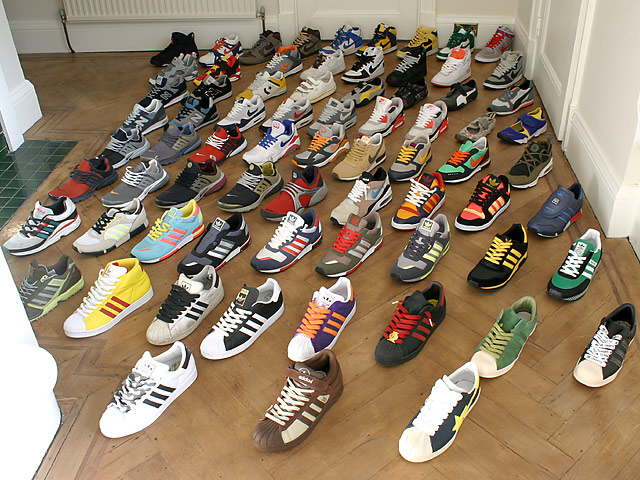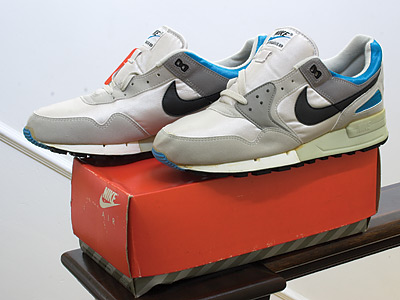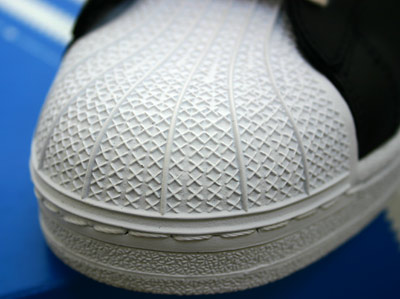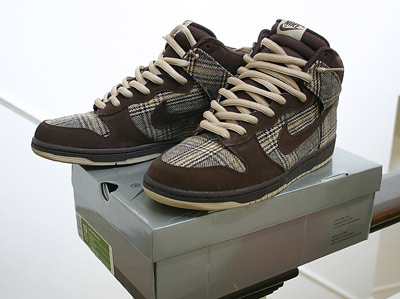and the site receives a small commission
You are using an out of date browser. It may not display this or other websites correctly.
You should upgrade or use an alternative browser.
You should upgrade or use an alternative browser.
ISO / Pushing
- Thread starter fingerz
- Start date
S
Steve
Guest
Well technically RAW has a +/- 2 stop lattitude according to most professionals, within that range the noise is virtually no different as far as I can see in my own results.
The thing to ask yourself is what circumstances are you adjusting for, I suspect that you may be attempting to maintain shutter speed at the expense of 1 or two stops adjustment in exposure during post processing-this is a technique I will use whenever necessary and have no issues with noise at all.
There again I am also very fortunate to be using a camera that has low noise at both the iso setting that you have stated.
As a sweeping statement I would say that shooting at ISO 100 and pushing the RAW file one stop would produce less noise.
The thing to ask yourself is what circumstances are you adjusting for, I suspect that you may be attempting to maintain shutter speed at the expense of 1 or two stops adjustment in exposure during post processing-this is a technique I will use whenever necessary and have no issues with noise at all.
There again I am also very fortunate to be using a camera that has low noise at both the iso setting that you have stated.
As a sweeping statement I would say that shooting at ISO 100 and pushing the RAW file one stop would produce less noise.
CT
TPer Emeritus
- Messages
- 26,617
- Edit My Images
- Yes
LOL. What a fantastic - if not bloody awkward question! 
I've never heard of push processing in connection with RAW files. It was a common practice with film, particularly among press men who would rate the film at a higher ISO than it actually was and then compensate at the development stage by increasing develpment time for what was now an under -exposed film. This often enabled them to get shots in extremely poor low light conditions. The downside was that image quality suffered with the images tending to be grainier and more contrasty than with a more normal gentle development. If you took a pushed film for processing, you had to tell the processors by exactly how many stops you'd pushed it so they could extend development to compensate.
That's the principle of it. Whether there's any benefit with digital I honestly don't know, but my gut feeling is there isn't, unless anyone knows any different? I'd imagine your lowest image noise is going to be obtained by using the lowest ISO, and you have image noise reduction capability in most raw processing software anyway.
If I'm wrong then we've both learned something!

I've never heard of push processing in connection with RAW files. It was a common practice with film, particularly among press men who would rate the film at a higher ISO than it actually was and then compensate at the development stage by increasing develpment time for what was now an under -exposed film. This often enabled them to get shots in extremely poor low light conditions. The downside was that image quality suffered with the images tending to be grainier and more contrasty than with a more normal gentle development. If you took a pushed film for processing, you had to tell the processors by exactly how many stops you'd pushed it so they could extend development to compensate.
That's the principle of it. Whether there's any benefit with digital I honestly don't know, but my gut feeling is there isn't, unless anyone knows any different? I'd imagine your lowest image noise is going to be obtained by using the lowest ISO, and you have image noise reduction capability in most raw processing software anyway.
If I'm wrong then we've both learned something!
- Messages
- 1,100
- Edit My Images
- No
Steve said:Well technically RAW has a +/- 2 stop lattitude according to most professionals, within that range the noise is virtually no different as far as I can see in my own results.
I've tried it a couple of times on pics from my 300D and found the noise to increase. But I wasn't sure whether it was more or less than if I'd used the next-highest ISO setting. I might do some tests when I get home later to see what happens.
Steve said:The thing to ask yourself is what circumstances are you adjusting for, I suspect that you may be attempting to maintain shutter speed at the expense of 1 or two stops adjustment in exposure during post processing...
That's exactly right. I find quite often that I can't get the shutter speeds I want at ISO 100 and I'm not a fan of digital grain/noise so I'm usually reluctant to go higher than 100.
Steve said:There again I am also very fortunate to be using a camera that has low noise at both the iso setting that you have stated.
Which camera are you using? I thought ISO was supposed to be a standard, so it was similar noise levels on all cameras. Guess I was wrong.
As an aside, and with my 'ISO standards' theory in mind, I always thought it was a big coincidence that digital cameras had similar exposure times to film cameras given that they are two completely different technologies. You'd think that one of them would have an advantage and therefore be able to get comparable shots at higher shutter speeds.
S
Steve
Guest
- Messages
- 1,559
- Name
- Steve
- Edit My Images
- Yes
I was reading about this 'pushing' technique only this afternoon in connection with minimizing camera shake.
It's a technique commonly used to get higher shutter speeds as mentioned earlier to minimise the effects of camera shake...apparently!
The article said you can fudge a little exposure latitude but there's bugger all you can do about shake blur.
It's a technique commonly used to get higher shutter speeds as mentioned earlier to minimise the effects of camera shake...apparently!
The article said you can fudge a little exposure latitude but there's bugger all you can do about shake blur.
S
Steve
Guest
fingerz said:That's exactly right. I find quite often that I can't get the shutter speeds I want at ISO 100 and I'm not a fan of digital grain/noise so I'm usually reluctant to go higher than 100.
Which camera are you using? I thought ISO was supposed to be a standard, so it was similar noise levels on all cameras. Guess I was wrong.
I am using a Canon 20D which is known for having very low noise.
Unfortunately all cameras are not created equally and they do return different noise levels at the same settings.
fingerz said:As an aside, and with my 'ISO standards' theory in mind, I always thought it was a big coincidence that digital cameras had similar exposure times to film cameras given that they are two completely different technologies. You'd think that one of them would have an advantage and therefore be able to get comparable shots at higher shutter speeds.
This is an area where CT will be able to answer far more accurately than I, however I take the iso standards in digital and this example to reflect what you can expect your settings to be for a given amount of light vs shutter speed/aperture. It would therefore give a similar setting across digital and conventional film although the noise levels can and do vary frequently at the same iso settings from camera to camera.
Remember there is no longer the same constant of make/type/speed of film in all the cameras as we are talking digital. I have never been a big film shooter so I could be wrong here but I suspect that two different brands of the same speed film may produce different grain (read noise). That can be extended to digital sensors in cameras, the same sensor and electronics should produce the same amounts of noise, however a different sensor and electronics from another camera manufacturer returns different noise-even at the same iso settings.
- Messages
- 1,100
- Edit My Images
- No
That's helped clear things up a bit.
I think a lot of my quest for high shutter speeds comes back to two things:
1) I don't have an external flash (so no bouncing) so my flash stuff looks no better than Joe Public's pub snapshots.
2) As stated earlier, I have an aversion to digital noise. Which is odd because I quite like film grain, it just doesn't look the same on digital.
I think a lot of my quest for high shutter speeds comes back to two things:
1) I don't have an external flash (so no bouncing) so my flash stuff looks no better than Joe Public's pub snapshots.
2) As stated earlier, I have an aversion to digital noise. Which is odd because I quite like film grain, it just doesn't look the same on digital.
S
Steve
Guest
Its a great question fingerz 
The amount of noise in your pictures will vary also depending on what part of the shot you are exposing for, if you are exposing for the highlites there is a good chance that the shadow detail could well be far more than -2 stops away. You them post process for the best overall result but may well attempt to drag some shadow detail back, that will obviously produce more noise.
Its a very trick situation that there is no easy answer to overall, obviously faster lenses and a more expensive camera that has lower noise is the right answer but we are not all professional and don't have their money.
We need to be realistic and find workarounds and compromises.
If the noise is bothering you at ISO100 and 200 I would spend a while downloading the various different software noise reduction packages and do tests on the same picture till you find the one that gives YOU the best results. If nothing else it will be a great learning exercise and you will then be able to be informed about what is available and what each is capable of.
Hope that helps
The amount of noise in your pictures will vary also depending on what part of the shot you are exposing for, if you are exposing for the highlites there is a good chance that the shadow detail could well be far more than -2 stops away. You them post process for the best overall result but may well attempt to drag some shadow detail back, that will obviously produce more noise.
Its a very trick situation that there is no easy answer to overall, obviously faster lenses and a more expensive camera that has lower noise is the right answer but we are not all professional and don't have their money.
We need to be realistic and find workarounds and compromises.
If the noise is bothering you at ISO100 and 200 I would spend a while downloading the various different software noise reduction packages and do tests on the same picture till you find the one that gives YOU the best results. If nothing else it will be a great learning exercise and you will then be able to be informed about what is available and what each is capable of.
Hope that helps
CT
TPer Emeritus
- Messages
- 26,617
- Edit My Images
- Yes
I agree noise levels can vary enormousy from one digital camera to another.Steve said:This is an area where CT will be able to answer far more accurately than I, however I take the iso standards in digital and this example to reflect what you can expect your settings to be for a given amount of light vs shutter speed/aperture. It would therefore give a similar setting across digital and conventional film although the noise levels can and do vary frequently at the same iso settings from camera to camera.
The ISO rating was a direct pinch from film speed ratings when ISO settings first started to become available in digital cameras. Early digital cameras didn't have any ISO settings - you got one setting and that was it. ISO 400 and above was always considered 'fast' film and you paid the price for the increase with grain. It sounds great increasing from ISO 200 to 400, but all it means in practice is that for any given exposure value, you can only go one f stop smaller or one shutter speed quicker.
Remember there is no longer the same constant of make/type/speed of film in all the cameras as we are talking digital. I have never been a big film shooter so I could be wrong here but I suspect that two different brands of the same speed film may produce different grain (read noise). That can be extended to digital sensors in cameras, the same sensor and electronics should produce the same amounts of noise, however a different sensor and electronics from another camera manufacturer returns different noise-even at the same iso settings.
I have to agree with that Steve - the first camera which really impressed me with low image noise was the 300D which really set me thinking about changing over to digital completely. Digital cameras vary enormously from one model to another in how much noise they produce.
S
Steve
Guest
CT said:We could have a whip round and buy fingerz a flashgun - save answering these questions.
We could have a whip round and buy Steve a new one since mine broke - it would save me answering these questions as I would be using my camera instead of talking about it
- Messages
- 4,666
- Edit My Images
- Yes
CT said:We could have a whip round and buy fingerz a flashgun - save answering these questions.
it'd have to be a bloomin great flashgun if he's doin landscapes!
Quote:
Remember there is no longer the same constant of make/type/speed of film in all the cameras as we are talking digital. I have never been a big film shooter so I could be wrong here but I suspect that two different brands of the same speed film may produce different grain (read noise). That can be extended to digital sensors in cameras, the same sensor and electronics should produce the same amounts of noise, however a different sensor and electronics from another camera manufacturer returns different noise-even at the same iso settings.
'tis indeed true. Film grain depends entirely on the quality of the film itself. A pro film stock at 400 iso will produce noticeably less (smaller) grain size than a cheapo 400iso film from tesco! it's just yet another extension of 'you get what you pay for' However, some cameras do use the same sensors and produce different levels of noise, mostly due to the internal processing that goes on with JPEGS. And I don't think RAW files are free of this constriction either, as different cameras produce different format raw files as the data is managed in different ways.
S
Steve
Guest
gandhi said:'tis indeed true. Film grain depends entirely on the quality of the film itself. A pro film stock at 400 iso will produce noticeably less (smaller) grain size than a cheapo 400iso film from tesco!
Thanks for that, I thought I was on the right track but it's always good to have things confirmed if in doubt.
gandhi said:it's just yet another extension of 'you get what you pay for' However, some cameras do use the same sensors and produce different levels of noise, mostly due to the internal processing that goes on with JPEGS. And I don't think RAW files are free of this constriction either, as different cameras produce different format raw files as the data is managed in different ways.
Its the electronics as well that play a big part, so two cameras with the same sensor and different eletronics could have totally different noise shown in their results.
MattEg
TPer Emeritus
- Messages
- 2,934
- Name
- Matthew Egan
- Edit My Images
- No
fingerz said:Which of these two options will have the least noise?
1) Shooting at ISO 200.
2) Shooting at ISO 100 and pushing the RAW file one stop.
Shooting at ISO 100 will have less noise over ISO 200 even when under exposed by a stop (depending on the lighting situation).
If you wish to deliberately underexpose a shot to get fast shutter speeds, you need to keep an eye on the shadows in your composition.
I found with the 10D that when bringing back deliberately underexposed shots, not only did it increase noise in the darker areas, it also produced a banding effect which totally screwed up the final image.
On the 300D & 10D, I would avoid over increasing the noise by only using upto ISO 200, or under expose by 1.5 stops.
If your taking landscape shots use ISO100, expose for the scene and use a tripod.
- Messages
- 1,100
- Edit My Images
- No
gandhi said:"pairs of sneakers"
*shakes head* the youth of today, I dunno
I should probably mention that I collect sneakers/trainers. I have 91 pairs or so. Here:
http://www.jameyhoward.com/sneaks/
And a school pic:

S
Steve
Guest
That's your age CT 
- Messages
- 1,100
- Edit My Images
- No
I've got a lot of retro stuff. Nike, adidas et al are spending a lot of time re-releasing their back catalogues these days.
Got some Original 1989 Air Pegasus the other day off eBay (god bless that site):

They're even wearable. Sixteen years and they can still take my weight without falling apart. They don't make 'em like they used to.
Edit - no prizes for spotting my sensor dirt
Got some Original 1989 Air Pegasus the other day off eBay (god bless that site):

They're even wearable. Sixteen years and they can still take my weight without falling apart. They don't make 'em like they used to.
Edit - no prizes for spotting my sensor dirt
- Messages
- 1,100
- Edit My Images
- No
Matt said:I'm sure you can still get 'Dunlop green flash' CT.
You can indeed:
http://www.schuhstore.co.uk/item.asp?s_ref=340001&fav_size=&fav_colour=
CT
TPer Emeritus
- Messages
- 26,617
- Edit My Images
- Yes
Matt said:I'm sure you can still get 'Dunlop green flash' CT.
Ho ho ho!

Now they don't look too bad Fingerz, but I'd look a right dildo walking around in those flashing neon jobs.

S
Steve
Guest
This thread started out as a cracker and has descended into disarray and ecstasy for a anyone who is related to Imelda Marcos or has a foot fetish :icon_eek:
Only here can it slip so seamlessly from one subject to another
S
Steve
Guest
gandhi said:my flat mate has a pair of 'green flash' but he's gay and can get away with it lol.
You have a gay flat mate - I think I would have kept that information to myself :whistling
- Messages
- 1,100
- Edit My Images
- No
IanC_UK
TPer Emeritus
- Messages
- 12,863
- Name
- Ian Cook
- Edit My Images
- Yes
- Messages
- 1,100
- Edit My Images
- No
Steve said:This thread started out as a cracker and has descended into disarray and ecstasy for a anyone who is related to Imelda Marcos or has a foot fetish
At least we're posting photographs... Well, I am
- Messages
- 1,100
- Edit My Images
- No
IanC_UK said:These are so chav its unreal !:whistling

There's a subtle difference between Burberry and tweed. That's what I tell myself, anyway.
- Messages
- 4,666
- Edit My Images
- Yes
fingerz said:I'll oblige then...


wish mine were still that white ! lol! I treat my trainers like I treat my girlfriend. Get in em once a day and stay there until the smell starts, no matter what the weather!
- Messages
- 4,666
- Edit My Images
- Yes
Steve said:You have a gay flat mate - I think I would have kept that information to myself :whistling
it's ok,
I sleep with my back to the wall and a chastity belt on!
*homophobia mode: OFF*
Oh yeah, and I get excellent fashion advice and free haircuts!

